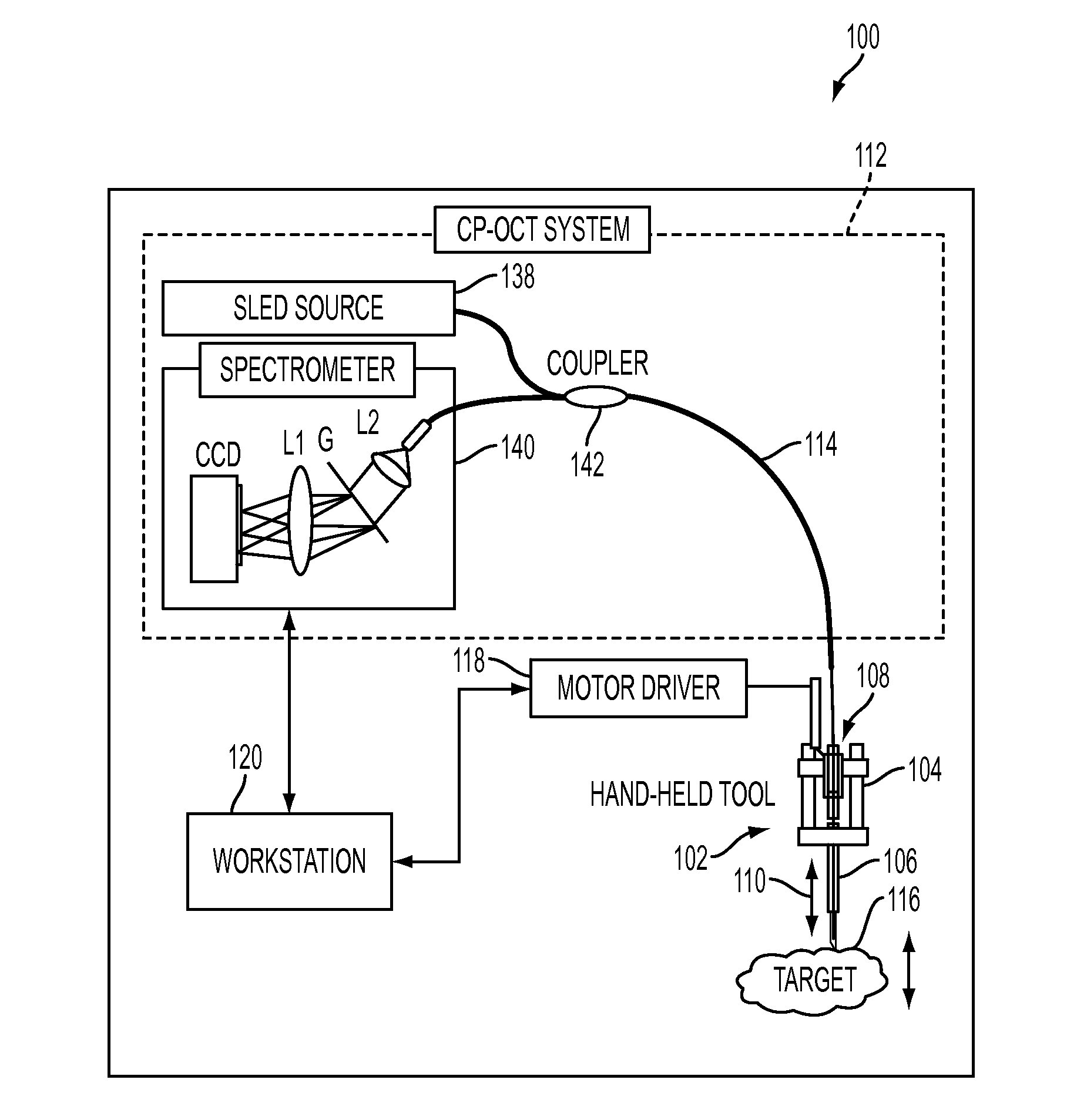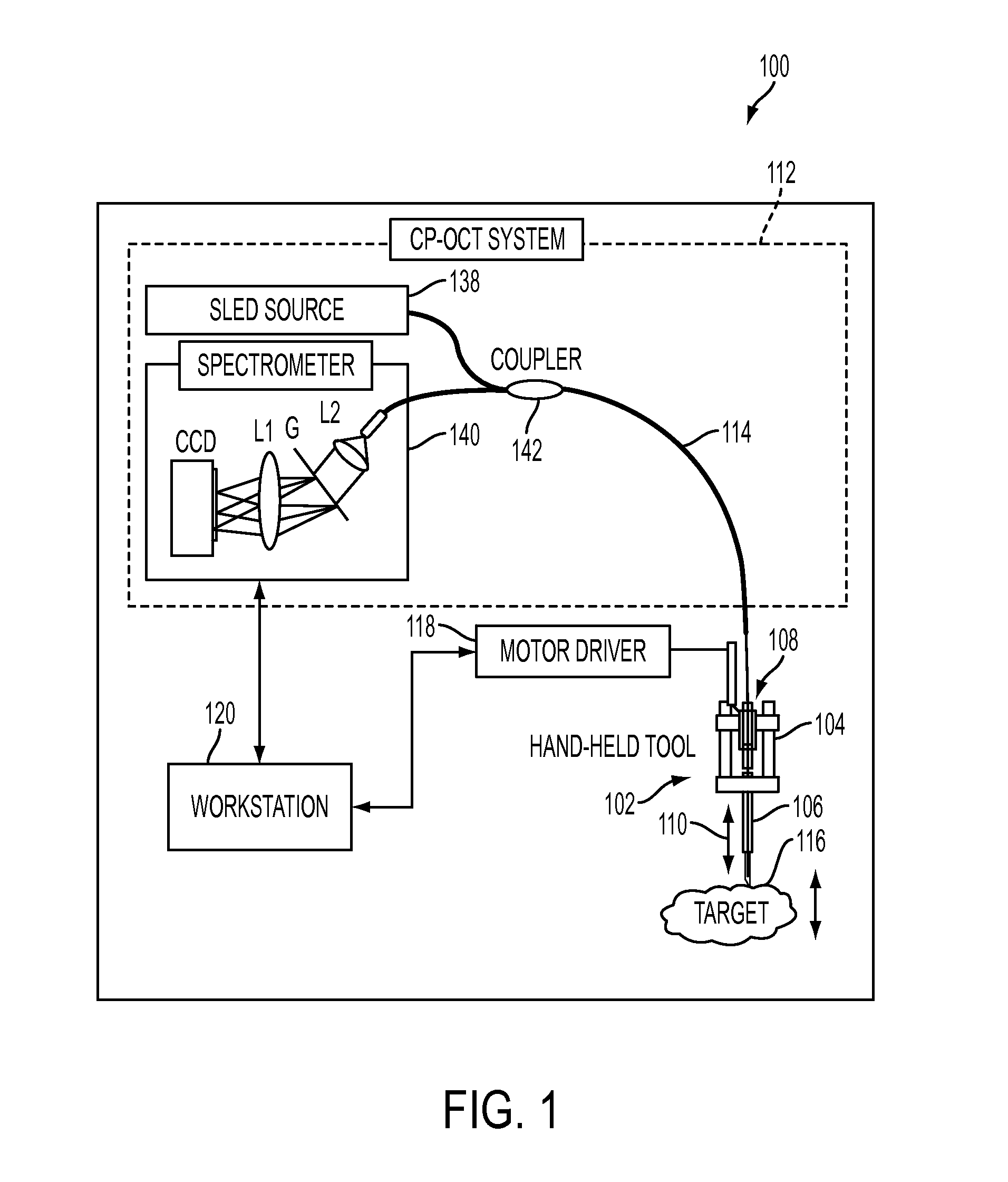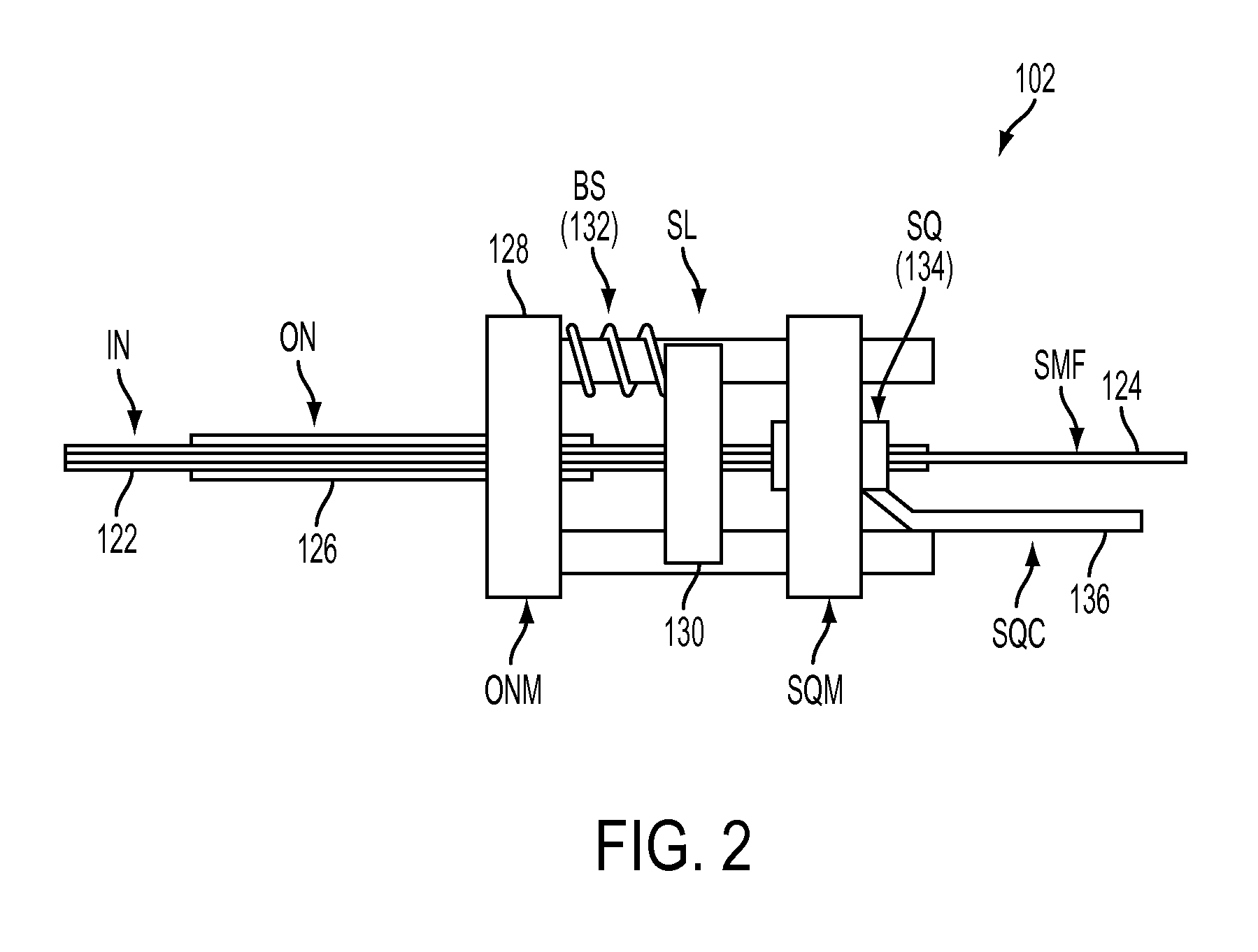Surface tracking and motion compensating surgical tool system
a surgical tool and surface tracking technology, applied in the field of surgical tools and systems, can solve the problems of physiological hand tremor, lack of tactile feedback in tool-to-tissue interaction, and inability to clearly view surgical targets
- Summary
- Abstract
- Description
- Claims
- Application Information
AI Technical Summary
Benefits of technology
Problems solved by technology
Method used
Image
Examples
examples
[0039]First we implemented the surface tracking and motion compensation tests for an example. The surgical tool tip is pointed perpendicularly to a reflective target surface, which moves back and forth from the initial position. The tool tip senses the motion and adjusts to keep a constant distance D=1120 μm by moving together with the target surface. The error changing between d and D is recorded with time, and the compensation effect is apparent by comparing the error values between “Compensation off” mode and “Compensation on” mode, as in FIG. 6A. FIG. 6B shows a zoomed-in view of the error-time curve at “Compensation on” mode in FIG. 6A. The compensation error is within ±5 μm, which agrees well with the resolution of CP-OCT. The phase error can be further reduced by applying a predictive filter into the tracking algorithm (Zhang, K., Wang, W., Han, J-H., Kang, J. U., “A surface topology and motion compensation system for microsurgery guidance and intervention based on common-pat...
PUM
 Login to View More
Login to View More Abstract
Description
Claims
Application Information
 Login to View More
Login to View More - R&D
- Intellectual Property
- Life Sciences
- Materials
- Tech Scout
- Unparalleled Data Quality
- Higher Quality Content
- 60% Fewer Hallucinations
Browse by: Latest US Patents, China's latest patents, Technical Efficacy Thesaurus, Application Domain, Technology Topic, Popular Technical Reports.
© 2025 PatSnap. All rights reserved.Legal|Privacy policy|Modern Slavery Act Transparency Statement|Sitemap|About US| Contact US: help@patsnap.com



